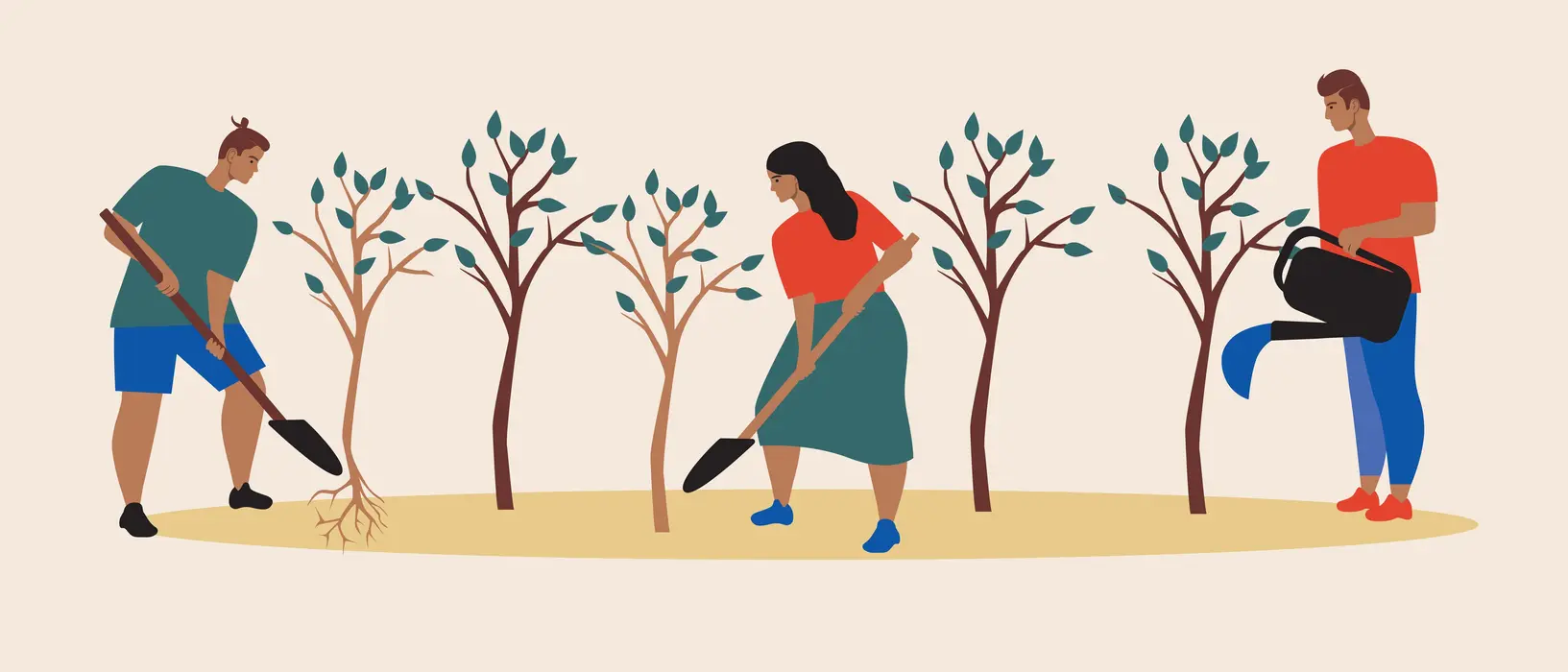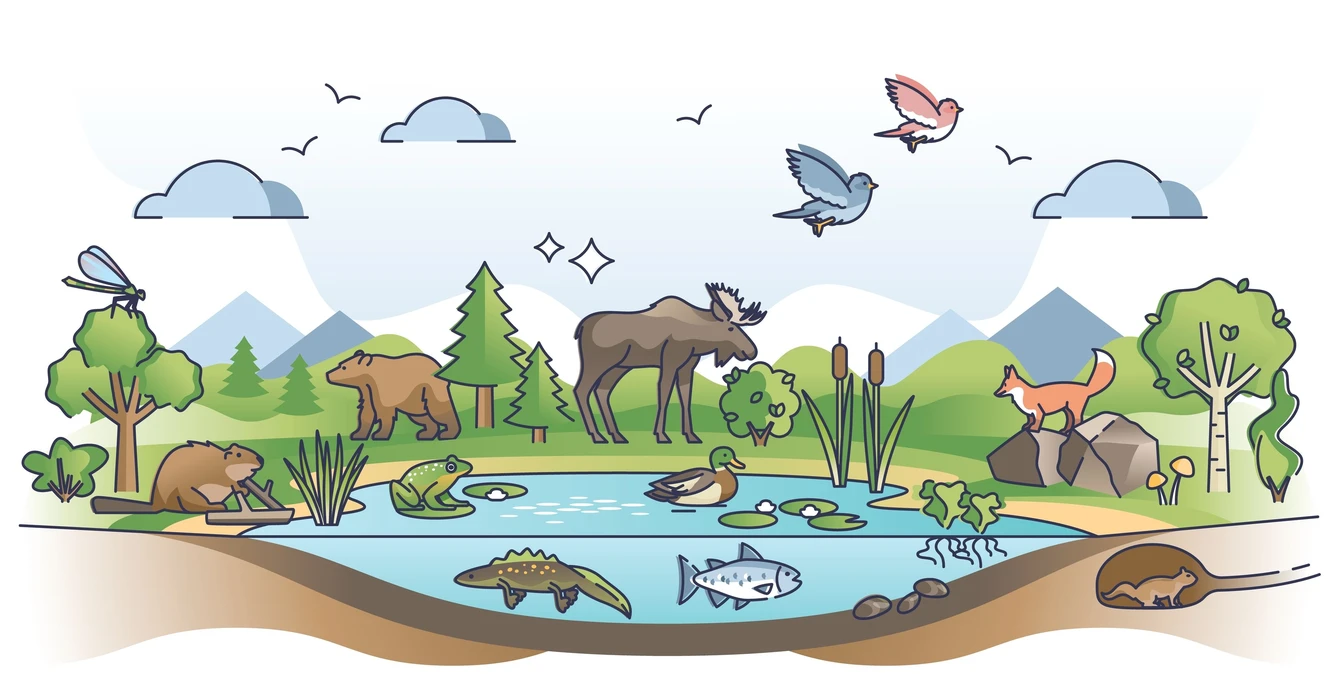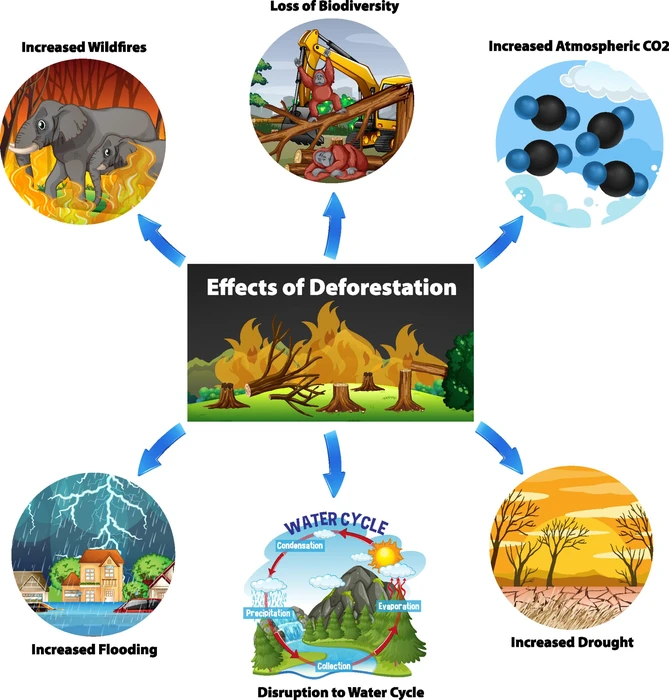Introduction
Forests are essential to human life due to the diverse materials they provide. They produce oxygen, which is required for life on Earth, act as a carbon sink, and store carbon, earning them the moniker “earth lung.” Furthermore, they regulate the hydrological cycle and the global climate; purify water; provide habitat for wildlife, reduce global warming, absorb harmful gases, and perform numerous other functions. More trees are planted, and wooded areas are maintained through forest conservation to ensure their sustainability for future generations. But it has become crucial to protect forests around the world due to rising deforestation operations. Deforestation is the permanent removal or destruction of forests to make way for new agricultural, livestock, or other uses of the land.
Some reasons why forests are essential to our survival.
The sustainable production of wood and timber products, as well as the provision of food, housing, and energy, is one of the most important functions of forests. They provide critical ecosystem services for human well-being, such as-
1. Forests cover one-third of the Earth’s land area. They carry out critical tasks all over the world.
2. The forest absorbs damaging greenhouse gases that lead to climate change.
3. Forests provide clean water for drinking, bathing, and other household needs. They help to maintain the balance of oxygen, carbon dioxide, and humidity in the atmosphere.
4. Forests provide numerous environmental, economic, social, and health benefits.
5. Forest is distributing food and medication. Forests provide safety, employment, and housing for communities that rely on them.
6. Forest cover mitigates floods and other natural disasters.
7. Forests are critical in our efforts to adapt to and mitigate climate change.
8. More than half of the world’s land-based species live in forests. Woods have the most biologically diverse ecosystems on land.
9. Many of the disease-treating medications sold around the world are made directly from plants found in rainforests.
10. Forests produce rubber, lac, organic pigments, gum, resins, and other materials.
Forest conservation
Forest conservation does not imply that users should be denied access, but rather that access should be granted in a way that does not harm the environment or our economy. The following methods might be applied to preserve forests, which would eventually enhance forested areas and ensure the sustainability of the available resources:
1. Afforestation is the practice of planting trees for monetary gain. Instead of removing trees from naturally existing forests, a practice known as “afforestation” is used to establish them and use them as resources.
2. Forest fire suppression: Forest fires are the most common and lethal cause of forest loss. As a result, precautions must be taken in such cases. Making fire lanes, using fire-fighting chemicals, removing dead trees and dry leaves, and so on.
3. Addressing the root causes of deforestation: If we are to effectively expand the role of forests in providing for basic human needs, we must address the root causes of deforestation, such as poverty and the need for food, shelter, and fuel.
4. Verifying forest clearances for urbanization: In an era of rapid urbanization and industrialization, it is common practice to remove forests through encroachment or authorization. As a result, strict regulations should be put in place to prevent the urbanization of forest areas.
5. Examining the forest harvesting procedure: To ensure successful in-situ conservation of biological diversity during forest exploitation, current forest harvesting procedures should be critically evaluated by the provisions of the Convention on Biological Diversity.

How can we protect wildlife?
Wildlife conservation refers to the process of protecting plant and animal species as well as their habitats. Wildlife conservation is a response to the century’s steadily increasing rate of extinction. Humans are to blame for the current rate of species extinction. However, we remain optimistic that we can save our species by taking a few critical steps. These are
1. Speak up for wildlife: your voice matters! Encourage your state and federal representatives to support wildlife protection legislation in writing.
2. Planting native plants is a great way to make our yards more wildlife-friendly. This provides food, shelter, and a place for wild animals to raise their families.
3. Ecosystem protection: One of the simplest and most effective ways to help wildlife is to preserve the environment in which it lives. The three major environmental conservation methods are to reduce, reuse, and recycle.
4. Be an informed consumer: Avoid using items that endanger wildlife and their habitats, such as non-recycled paper products, gas-guzzling cars, and so on.
5. Preserving endangered species: The Endangered Species Act has proven to be a successful safety net for threatened species, saving more than 98 percent of the animals it has cared for from extinction.

What if all the forests are destroyed?
It is impossible to imagine our existence without forests. The following are some consequences of destroying the entire forest:
1. The amount of in the \(C{O_2}\) atmosphere will increase. As a result, the Earth’s temperature will rise.
2. Many animals and plants are losing their natural habitats. If they cannot find a suitable environment to live in, they may eventually die or become extinct.
3. The soil dries out without trees, and the water cycle is disrupted. Rain will cause flooding because the land cannot hold the water.
4. We will not receive valuable forest products. Tribal members may also lose their source of income.

Summary
More trees are planted, and wooded areas are maintained through forest conservation to ensure the sustainability of wooded regions for future generations. We can rely on forests for shelter, work, water, food, and fuel security, among other things. The practice of preserving plant and animal species, as well as their habitats, is known as wildlife conservation. We, humans, have a responsibility to protect our species by taking a few key actions.
Frequently Asked Questions
1. What are the negative consequences of deforestation?
Ans. In addition to harming the environment, society, and especially the climate, biodiversity, and poverty, deforestation has a negative economic impact.
2. What exactly is the Global Forest Carbon Mechanism (GFCM)?
Ans. The Global Forest Carbon Mechanism is a financial structure that would reward developing countries for reducing their emissions.
3. How can we ensure food security while also halting deforestation?
Ans. The increased agricultural output should be achieved without cutting down more trees. Better land design and significant investment are required to increase yields on existing farmland.